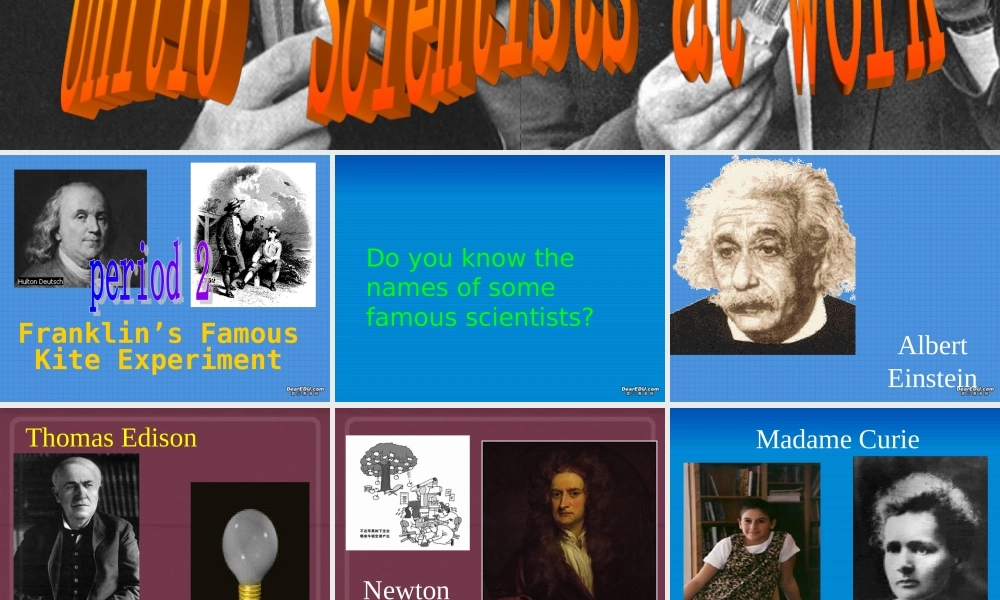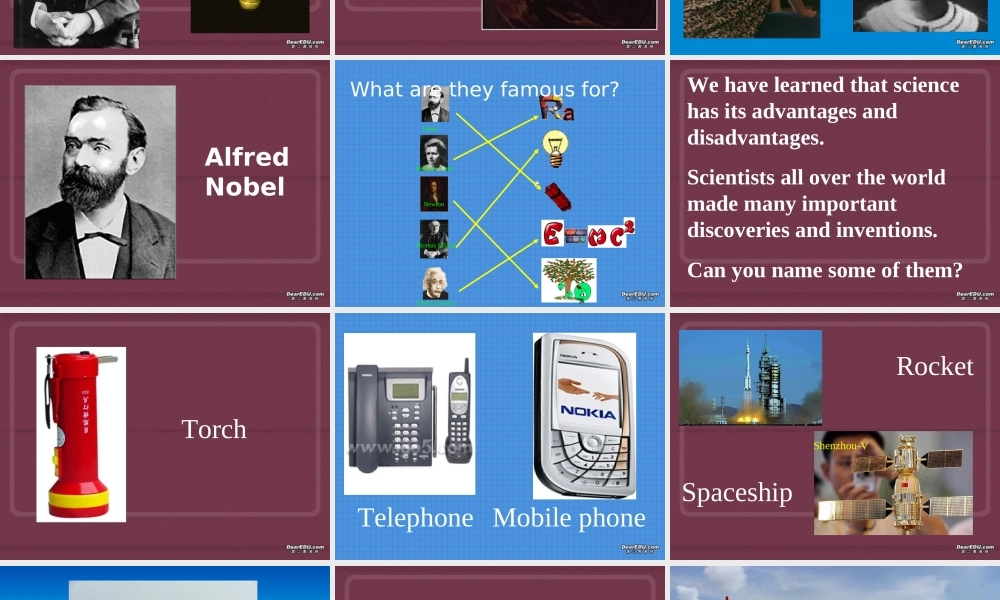Franklin’s Famous Kite ExperimentDo you know the names of some famous scientists?Albert EinsteinThomas EdisonNewtonMadame CurieAlfred NobelNobelMadame CurieNewtonThomas EdisonAlbert EinsteinWhat are they famous for? We have learned that science has its advantages and disadvantages.Scientists all over the world made many important discoveries and inventions.Can you name some of them?TorchTelephone Mobile phoneRocketSpaceshipShenzhou-VMaglev trainComputerplaneTV setThey all need electricity.No electricity, no modern life.Who discovered the electricity?Benjamin Franklin (1706---1790)How did he discover the electricity?an American printer, author, diplomat, philosopher, and scientist Benjamin Franklin discovered the electricity by doing / conducting a kite experiment.Franklin’s famous kite experimentDescribe Franklin’s experiment:• Time:• People:• Weather:• Purpose:• Materials:• Steps:• Results:• June,1752• Franklin and his son as an assistant• Thunderstorm, rainy day• To prove lightning and electricity are the same• A kite, a key, some bad weather, a condenser• 1.fix…to… 2,fasten…to 3,tie…to• The electricity stored in the condenser can be used to do other experiments ,which proves that lightning and electricity are the same.■KiteKeyBad weather(thundercloud 雷雨云 )Condenser(charge 充 and store 存 )■A sharp metalA silk ribbonCross (frame)StringKey→→→Make a kiteCome on ! Daddy.■• Fix…to• Fasten…to• Tie…toThe pictures show how Franklin did his experiment. Pick out the correct ones.True(T) or false(F)1. In 1752 scientists already knew what electricity is. ( )2. Franklin was helped by a friend to do the experiment. ( ) 3. Franklin made the kite of silk because wet silk does not conduct electricity. ( ) 4. A condenser was used in the experiment to store electricity. ( )5. The key tied to the string was put into the door to stop the kite from flying away. ( ) TTFFF The experiment is very dangerous. How did Franklin use his creativity to overcome various problems for his experiment?Discussion:Homework:Write an experiment report after class.TitleExperiment’s namePurposeProcedureResultsConclusion




